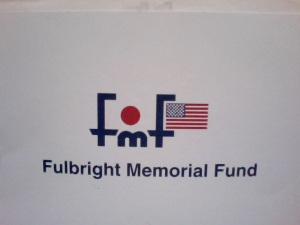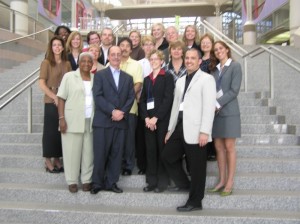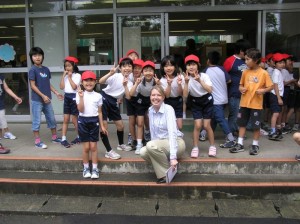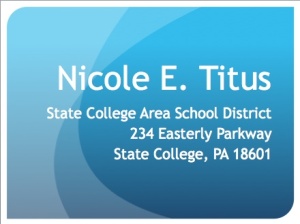Japan Fulbright Memorial Fund Teacher Program
When I found out that I would be teaching in this school district, I knew that there was a social studies unit on Japan. Secretly, I hoped that one day I would be able to teach that unit. Several years ago, I was fortunate to be a part of a teacher delegation from the United States that traveled to Japan as part of the Fulbright Memorial Fund. Unfortunately, the program has disbanded, but I thought that I would provide some background information about the program. To this day, it has been one of the greatest personal and professional highlights of my life.
The Japan Fulbright Memorial Fund (JFMF) Teacher Program allowed primary and secondary school educators in the U.S. to travel to Japan for three weeks in an effort to promote greater intercultural understanding between the two nations. The belief was that peace and greater understanding comes through education.
Participating educators began their visit in Tokyo with a practical orientation on Japanese life and culture and met with Japanese government officials and educators. We traveled to selected host cities outside of Tokyo where we had direct contact with Japanese teachers and students during visits to primary and secondary schools as well as a teacher’s college. We visited cultural sites and local industries in addition to a brief home stay with a Japanese family.
The Japan Fulbright Memorial Fund, based in Tokyo, oversaw all aspects of the Teacher Program. The program was sponsored by the Government of Japan and was launched in 1997 to commemorate the 50th anniversary of the U.S. government Fulbright Program, which enabled more than 6,000 Japanese citizens to study in the U.S. on Fulbright fellowships for graduate education and research. The Institute of International Education acted as the agency for the Japan Fulbright Memorial Fund to coordinate the recruitment and pre-departure activities of the Teacher Program in the United States.
More than 4,600 primary and secondary educators visited Japan through the JFMF Teacher Program. Upon their return, program participants shared what they have learned about Japan with their students and communities through a variety of outreach projects.
I look forward to sharing many stories with you as our unit on Japan continues to unfold. 🙂
For more information on the program, visit: http://www.iie.org/en/Programs/JFMF
Meishi
We are getting ready to kick-off our unit for Japan. In preparation for our “trip,” the students will be creating business cards called meishi. In preparing for my own travels to Japan a few years ago, I discovered that there is a whole protocol for exchanging meishi with another person. First, meishi is considered an extension of yourself that you are sharing with another person. There is a ritual for exchanging meishi with another person. You accept the card from someone by holding it in the two bottom corners. You take a moment to study the card looking at the front and back of it. Then, depending on the age and position of the person, you bow to each other. Finally, you place the meishi in a special holder designed for business cards—-never in a back pocket.
We will be practicing this ritual in class after the students create their own meishi using google presentation.
As part of a teacher delegation traveling to Japan, we also had the opportunity to visit several schools. It is fun to share another story of our experience with meishi while visiting the Japanese schools. In the United States, students like to collect baseball cards or other types of game/sports cards. While we were visiting the schools, students would come up to us and say “meishi, meishi.” They were collecting the teachers’ cards like students here collect sports cards. It left such an impression on me that I knew I had to expose our students to this aspect of Japanese culture as one of the first things of our unit.




